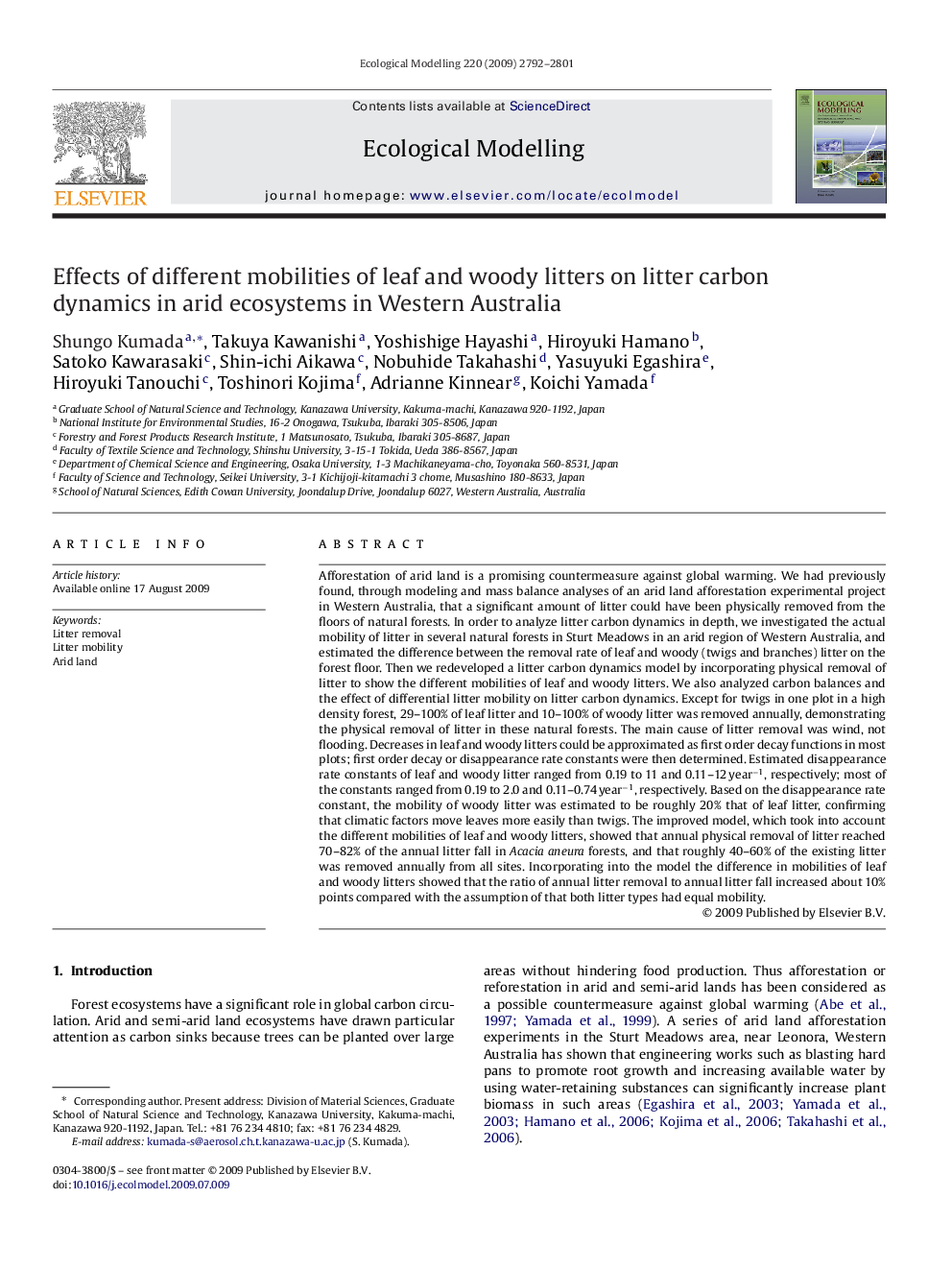| Article ID | Journal | Published Year | Pages | File Type |
|---|---|---|---|---|
| 4377560 | Ecological Modelling | 2009 | 10 Pages |
Abstract
Afforestation of arid land is a promising countermeasure against global warming. We had previously found, through modeling and mass balance analyses of an arid land afforestation experimental project in Western Australia, that a significant amount of litter could have been physically removed from the floors of natural forests. In order to analyze litter carbon dynamics in depth, we investigated the actual mobility of litter in several natural forests in Sturt Meadows in an arid region of Western Australia, and estimated the difference between the removal rate of leaf and woody (twigs and branches) litter on the forest floor. Then we redeveloped a litter carbon dynamics model by incorporating physical removal of litter to show the different mobilities of leaf and woody litters. We also analyzed carbon balances and the effect of differential litter mobility on litter carbon dynamics. Except for twigs in one plot in a high density forest, 29-100% of leaf litter and 10-100% of woody litter was removed annually, demonstrating the physical removal of litter in these natural forests. The main cause of litter removal was wind, not flooding. Decreases in leaf and woody litters could be approximated as first order decay functions in most plots; first order decay or disappearance rate constants were then determined. Estimated disappearance rate constants of leaf and woody litter ranged from 0.19 to 11 and 0.11-12Â yearâ1, respectively; most of the constants ranged from 0.19 to 2.0 and 0.11-0.74Â yearâ1, respectively. Based on the disappearance rate constant, the mobility of woody litter was estimated to be roughly 20% that of leaf litter, confirming that climatic factors move leaves more easily than twigs. The improved model, which took into account the different mobilities of leaf and woody litters, showed that annual physical removal of litter reached 70-82% of the annual litter fall in Acacia aneura forests, and that roughly 40-60% of the existing litter was removed annually from all sites. Incorporating into the model the difference in mobilities of leaf and woody litters showed that the ratio of annual litter removal to annual litter fall increased about 10% points compared with the assumption of that both litter types had equal mobility.
Keywords
Related Topics
Life Sciences
Agricultural and Biological Sciences
Ecology, Evolution, Behavior and Systematics
Authors
Shungo Kumada, Takuya Kawanishi, Yoshishige Hayashi, Hiroyuki Hamano, Satoko Kawarasaki, Shin-ichi Aikawa, Nobuhide Takahashi, Yasuyuki Egashira, Hiroyuki Tanouchi, Toshinori Kojima, Adrianne Kinnear, Koichi Yamada,
